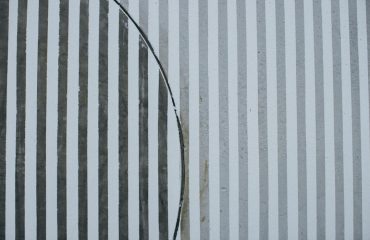body { font-family: sans-serif; line-height: 1.6; }
h1, h2, h3 { color: #333; }
code { background-color: #f0f0f0; padding: 2px 4px; border-radius: 4px; }
Steel, a marvel of engineering, forms the backbone of countless structures worldwide. However, its inherent strength must be accurately calculated to ensure safety and stability. This post delves into the intricacies of strength calculations in steel structures, providing a comprehensive overview for engineers and students alike.
1. Understanding Steel Material Properties
The foundation of any steel structure calculation lies in understanding the material’s properties. These properties, defined by standards like ASTM (American Society for Testing and Materials), dictate the steel’s behavior under stress. Key properties include:
- Yield Strength (fy): The stress at which the steel begins to deform plastically. This is a crucial parameter in design, as it represents the limit of elastic behavior.
- Ultimate Tensile Strength (fu): The maximum stress the steel can withstand before fracture. While important, it’s rarely used directly in design due to safety factors.
- Young’s Modulus (E): A measure of the steel’s stiffness or resistance to elastic deformation. It’s used in calculating deflections and stresses.
- Poisson’s Ratio (ν): The ratio of lateral strain to axial strain. While less critical in basic calculations, it’s essential for more advanced analyses.
These properties vary depending on the steel grade (e.g., A36, A992), and accurate values must be obtained from material test reports or relevant specifications. Variations in material properties due to manufacturing processes must also be considered.
2. Identifying and Analyzing Load Types
Steel structures are subjected to various loads, each requiring careful consideration in the design process. These loads can be broadly categorized as:
- Dead Loads: The self-weight of the structural elements (beams, columns, etc.).
- Live Loads: Variable loads such as occupancy loads (people, furniture), snow loads, and wind loads. These loads are often determined using building codes and relevant standards.
- Environmental Loads: Include snow, wind, rain, seismic (earthquake) loads, and temperature effects. These loads are location-specific and require careful consideration based on local building codes and geographical factors.
- Impact Loads: Sudden, dynamic loads that can significantly increase stresses. Examples include vehicle impacts or equipment vibrations.
Load combinations are crucial. Design codes specify various load combinations to account for the simultaneous occurrence of different load types. The most critical combination governs the design.
3. Leveraging Design Codes and Standards
Strength calculations in steel structures are governed by national and international design codes. These codes provide design procedures, allowable stresses, and safety factors to ensure structural integrity. Examples include:
- AISC (American Institute of Steel Construction): Provides design specifications for steel structures in North America.
- Eurocode 3: The European standard for steel structures.
- AS/NZS 4600: The Australian/New Zealand standard for steel structures.
These codes incorporate safety factors to account for uncertainties in material properties, load estimations, and analytical methods. Adherence to the relevant design code is paramount for legal and safety reasons.
4. Common Calculation Methods: Bending, Shear, and Axial Loads
Strength calculations often involve analyzing stresses and deflections due to various load types. Common methods include:
- Bending: Beams are subjected to bending moments, causing tensile and compressive stresses. Calculations involve using bending stress formulas (σ = My/I), where M is the bending moment, y is the distance from the neutral axis, and I is the moment of inertia.
- Shear: Shear stresses arise from transverse loads on beams and other structural elements. Shear stress calculations involve using shear stress formulas (τ = VQ/It), where V is the shear force, Q is the first moment of area, I is the moment of inertia, and t is the thickness.
- Axial Loads: Columns are subjected to axial compressive loads, leading to buckling if the load exceeds the critical buckling load. Column design involves using interaction equations that account for both axial and bending stresses.
These calculations often involve complex equations and require a strong understanding of structural mechanics. Software tools like STAAD Pro, RISA-3D, and ETABS are commonly used to simplify and automate these calculations.
5. Advanced Considerations: Fatigue, Stability, and Connections
Beyond basic strength calculations, several advanced considerations are crucial for ensuring structural integrity:
- Fatigue: Repeated cyclic loading can cause fatigue failure, even at stresses below the yield strength. Fatigue analysis requires specialized techniques to assess the structure’s endurance under cyclic loading.
- Stability: Buckling of slender members (columns, beams) is a major concern. Stability analysis involves determining the critical load that causes buckling and ensuring the design load is well below this limit.
- Connections: The strength of a steel structure is heavily reliant on the design and detailing of its connections (bolts, welds). Careful consideration of connection strength is vital to avoid premature failure.
Advanced analysis techniques, such as finite element analysis (FEA), are often employed to address these complex aspects of steel structure design.
Mastering strength calculations in steel structures requires a thorough understanding of material properties, load types, design codes, and various calculation methods. While software tools can simplify the process, a strong theoretical foundation is essential for accurate and safe designs. Continuous learning and staying updated with the latest advancements in the field are crucial for any structural engineer.
SEO Tags:
Steel Structure Design, Steel Strength Calculation, Structural Engineering, AISC Steel Design, Eurocode 3 Steel




